April 7
Valencia
This is Embry again, writing my occasional blog contribution. I am happy to report that Joe’s blogs for the past week have been 100% accurate: no six-meals-a-day-exaggerations. As you can tell from his reports, we have continued to have an amazing time here in sunny southern Spain. We knew nothing at all about Valencia, and it has continued to surprise us with its charm day-after-day. It is hard to say what is most appealing, but here are a few things: (1) as with many European cities, each time you turn around (especially in the older part of town) you bump into some beautiful piece of old-to-ancient architecture; my favorites are the huge carved wooden doors–usually with equally beautiful hardware—each a unique work of art, of which there are hundreds; (2) people-watching over café con leche in some lovely square; (3) Semana Santa or Holy Week, of which you have a full report from Joe; and (4) the friendly atmosphere that is welcoming to strangers like us, and virtually devoid of tourists, which stimulates our use of broken Spanish.
Joe thought I might briefly recap some of the best “tourist attractions” we have visited, since he has been concentrating on other things. I don’t want to go into tedious, lengthy detail which you can get on-line or in a guide book. But I do want to stimulate your interest in this beautiful part of the world, which is not on many American “must see” lists (although I did notice that the next GW alumni tour is to Valencia!). I will list them in the order we have seen them.
- Madeira: This is a lovely island off the coast of Africa, which is home to 250,000 people. It is an autonomous region of Portugal that, only in the 1970s, was “released” from the dictatorship of Salazar. Land was redistributed into smaller plots, and it is now rather prosperous with a thriving tourist industry (including receiving cruise ships like ours, which dropped us off for a day). Because the island was formed by a now-extinct volcano, the soil is rich, but the hills are so precipitous (with many beautiful waterfalls) that farming is by hand (no tractors). In spite of this, because of fertile soil and lots of sun and rainfall, they produce a lot of fruits, such as bananas and grapes. They produce a good sweet wine , and they are proud to say that the signing of the U.S. Declaration of Independence was toasted with “Madeira”. This is a good place to come for a winter vacation, but don’t expect sandy beaches. (You can go by ferry to a near-by island for one).
- Seville: We had a second cruise-ship stop in Cadiz, where we took a bus to Seville. We had been there once before, when Andrew was three years old, so a long time ago! It is a lovely, walkable city (as we recalled), and the best thing we visited was the Alcazar, the old Moorish palace which is surprisingly well-preserved. It was taken over by the Christian king “Peter the Cruel” (and one can imagine what happened to the Moors under his watch if that is what he is called!). The whole history of this area of Spain is incredibly sad, since—with the “reconquering” of the area (actually quite a misnomer)—they expelled the Jews and then the Muslims—and with this destroyed the culture, knowledge, and artistic capabilities of a whole multi-cultural civilization. (We were not as fond of the huge cathedral, which kept little of the beautiful Moorish architecture of the Alcazar.) Still, Seville is worth a visit and an overnight stay if you can.
- Granada: The third cruise ship stop was at Malaga, where we took a tour to Granada to see the Alhambra. This is the most-visited tourist site in Spain, and you cannot get in without a pre-arranged tour. They have about 8,000 visitors a DAY, throughout the year. This was the palace of the last Muslim Caliph, Boabdil and was miraculously saved from total destruction several times. Built in the 13th century, when this final Muslim kingdom was conquered by Ferdinand and Isabella, they knocked down 7 of the 8 palaces, but left this one. Our guide speculated that they could not bear to destroy something so beautiful, so that “gave it to their friends,” who kept it more or less intact for a couple of centuries until it began to fall into ruin. Then in the Napoleonic wars it was occupied and used as stables by Napoleon’s army, until they quickly evacuated and failed to destroy it as they usually did when they left (according to the guide!). Again it was abandoned and fell into ruin until it was discovered by American Ambasador, Washington Irving–who wrote the Tales of the Alhambra and made the place famous. This led to tourists and a subsequent renovation by the Spanish government.
- Valencia area: Aside from trying to “live like locals,” we have also spent some of our time “being tourists.” Our top recommendations so far for tourists include: (1) the lovely late-Gothic Cathedral (15th century), with added decoration from the 17th and 18th centuries (but not at all an “overdone hodgepodge” as in Seville); (2) the beautiful central market that is another architectural gem; and (3) Xativa Castle, which is about an hour out of town where we took our only car trip. This amazing place is at the top of an apparently-impenetrable precipice, but in reality it has been conquered and re-conquered several times, through various siege-warfare techniques from starvation to cannons. The large building is where we are staying (seventh floor on the right); and though it may not win any design awards, the apartment is quite nice as are the views.
The photo below is a typical sunset as viewed from our window.
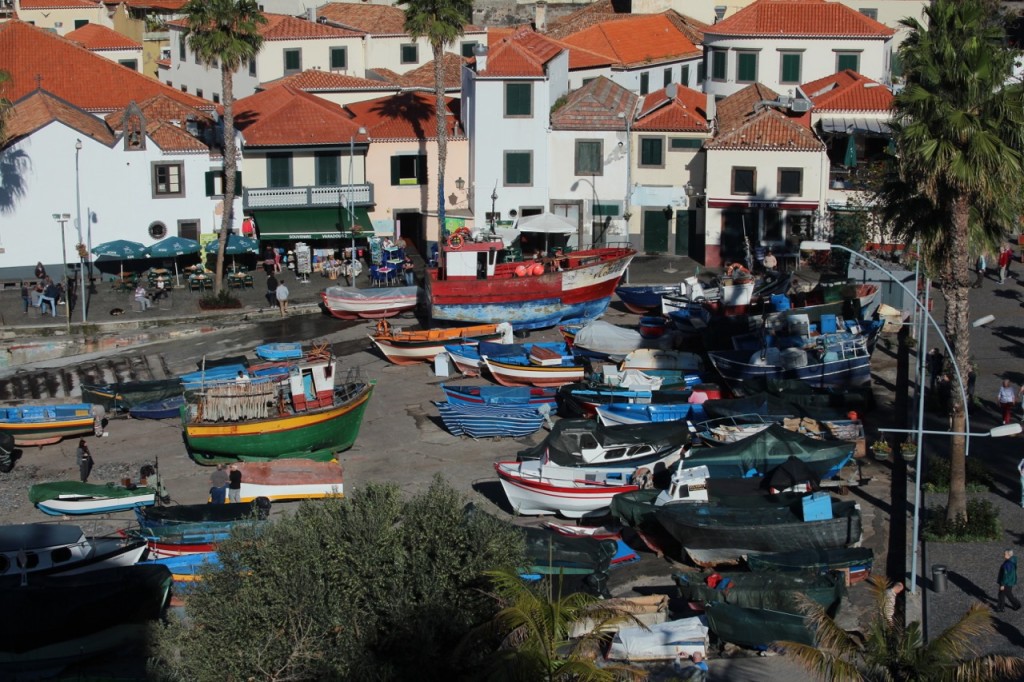
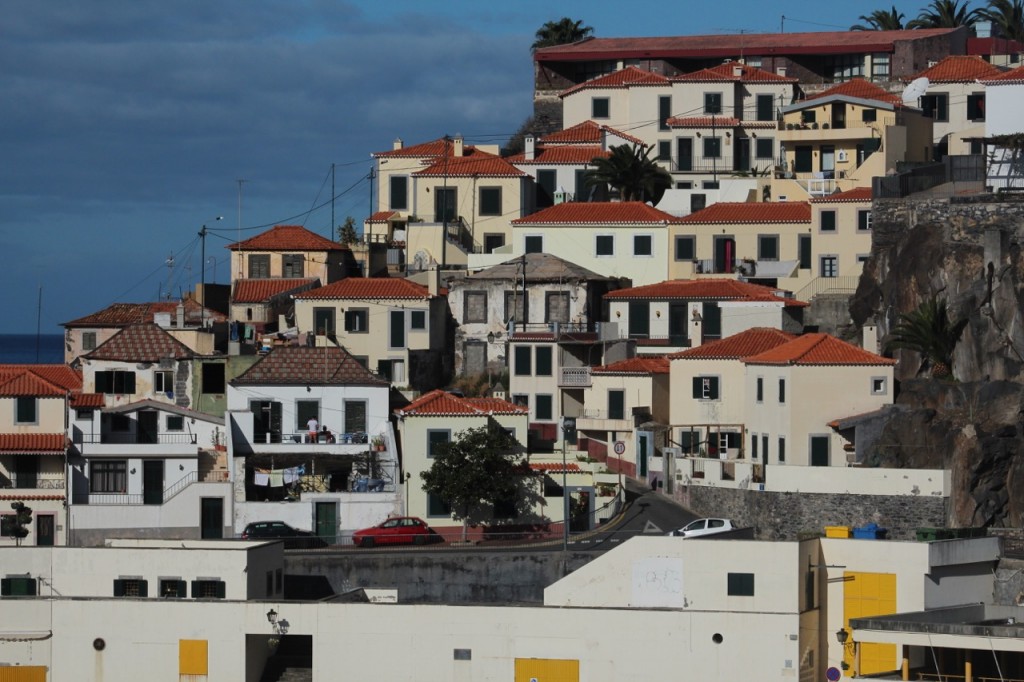
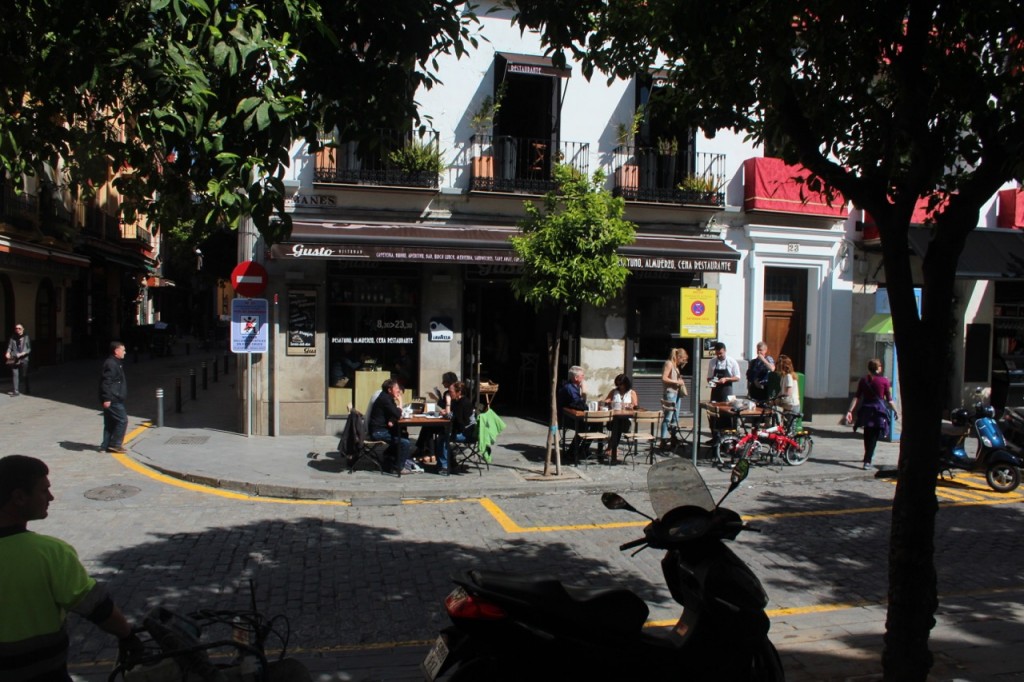
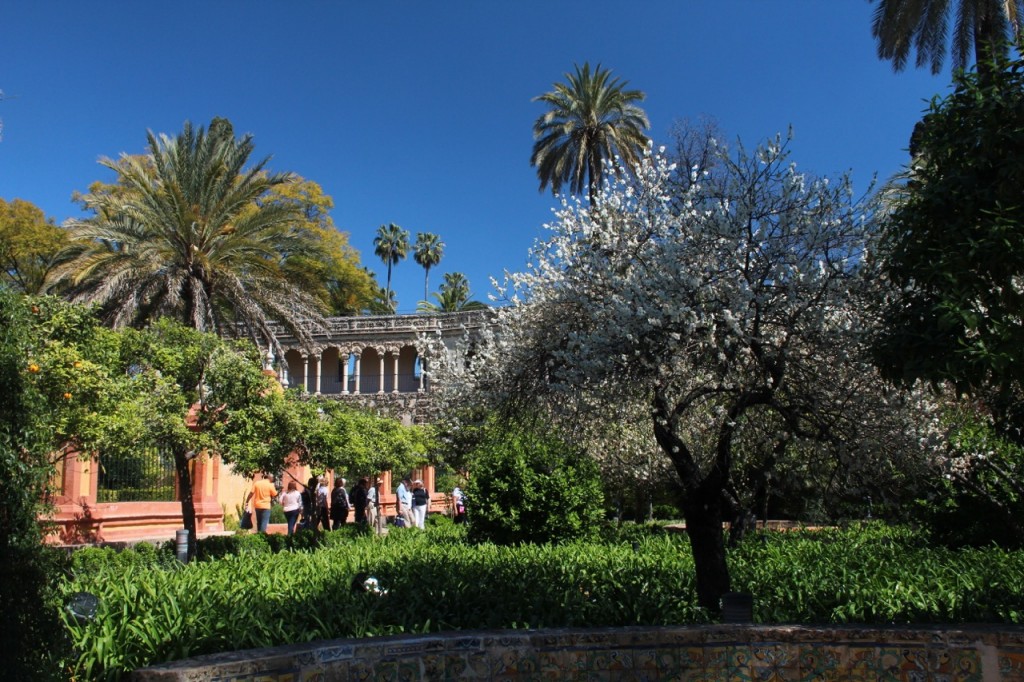
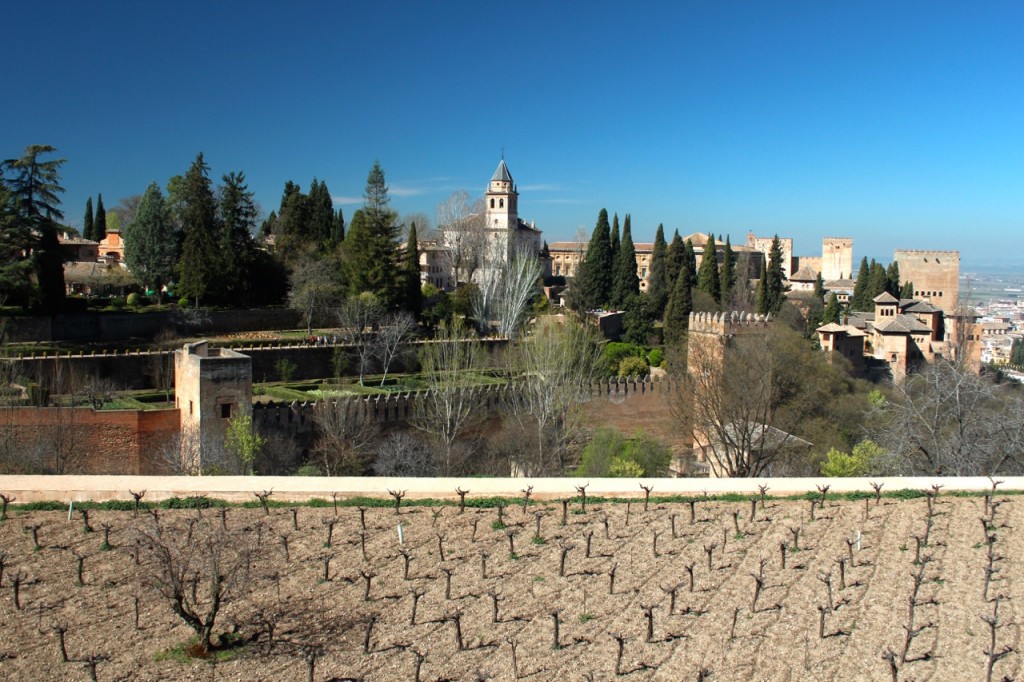

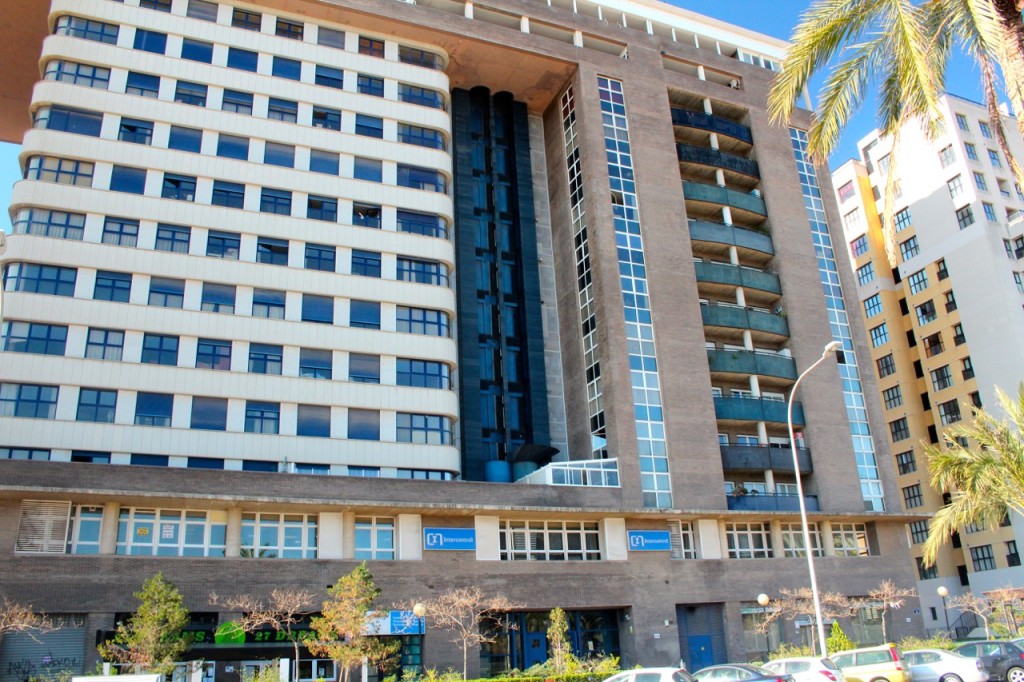
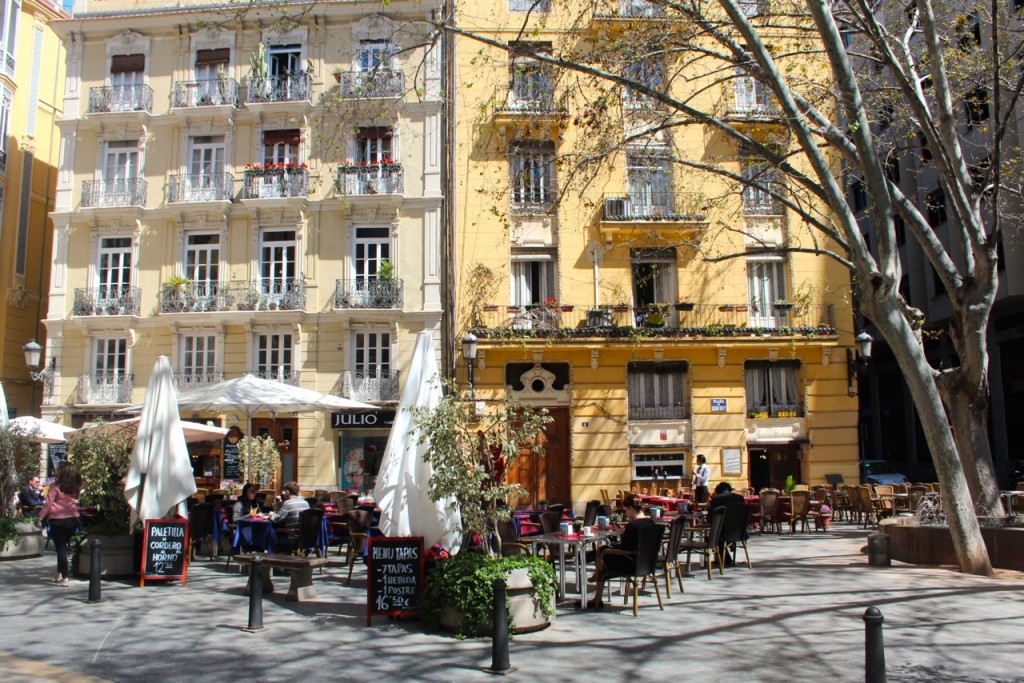
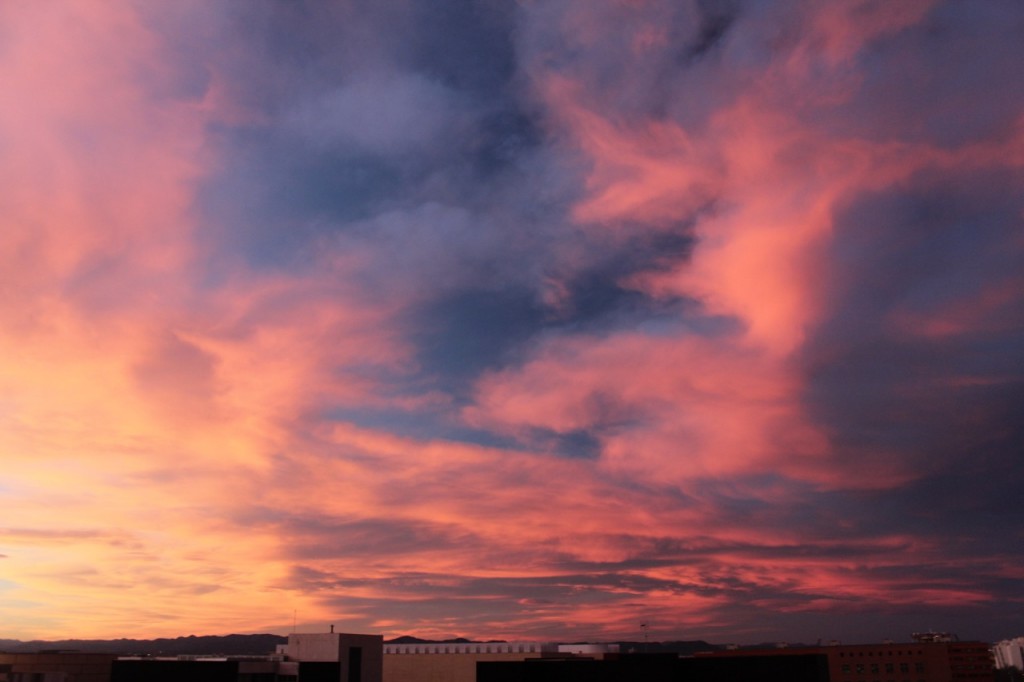
Wow, this provided a lot of detail of the many things you have already seen in Spain. Needless to say, we are envious and look forward to more in the future.
Valencia is amazing! You have to rent a bike there. They have a dry riberved through the town that you can bike on. Then you get to the beach and can have paella for two (request no rabbit!). Madrid has spectacular flamenco dances that will blow your mind. I did a bike tour in Barcelona which was a great way to see so much of the city. Oh, and the Picasso Museum in Barcelona, you can skip the modern art gallery…so strange! And the best part, get into Spanish culture by having a siesta every afternoon and supper at 10PM!